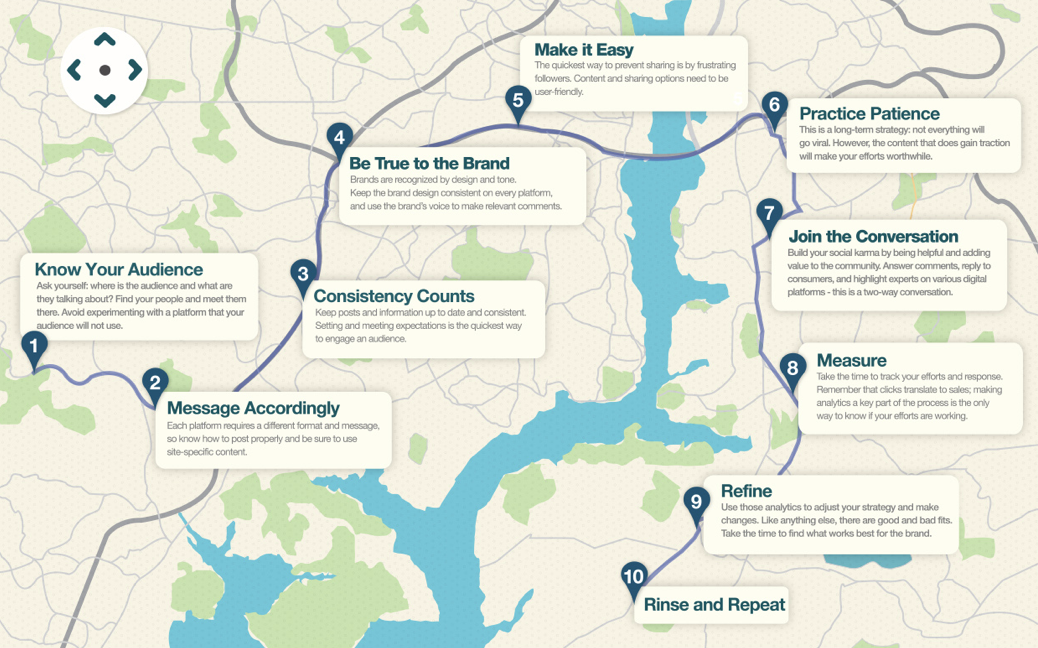By adaptive - July 30th, 2013
Having a brand voice is a great thing but if you don’t ensure all departments within your corporation understand it, there won’t be any coherence or consistency to promote your business’ brand value
The first part of this series examined the role of brand voice and how this can be used to engage with your customers. The clear outcomes were – consistency and coherence are vital elements of any campaign. Of course, there are always the differences in culture that need to be understood and respected, but a brand voice needs the pillars of consistency and coherence in order to remain strong enough to be heard by everyone.
Krystal Kovacs, founder of Sketch Marketing, says, “Consistency leads to credibility. It shows authority, confidence and reliability. Chopping and changing your brand image shows a lack of clarity of purpose and leads to a muddy brand image.”
Jon Norris, Web Editor for Crunch Accounting agrees, “Your voice on social channels should carry through to wherever you’re sending your followers. If a potential customer clicks through from a light-hearted tweet to a very dry, serious piece of content it can prove a bit jarring. The ‘voice’ belongs to the company as a whole, not the marketing department, so it makes sense that the whole company is involved in deciding what it says.”

This conformity of voice across all departments may sound like a stretch, especially if each one handles a vastly diverse range of markets, but it can be done. Norris believes that the easiest way to ensure that there is a measure of consistency, regardless of market or angle, is to have a very simple set of brand guidelines that everyone must follow.
“These needn’t be prescriptive, but they should influence every aspect of customer-facing activity,” says Norris, “In our organisation we employ a collaborative approach whereby all our communications are checked by various departments to make sure everyone is happy and that they are representative of Crunch’s collective voice.”
Talking across the cubicles
This is a very strong strategy for most organisations and can be used to great effect. However, for many of the larger enterprises this may prove to be too time consuming to realistically put into action. In this case a different set of rules applies. These can be structured to fit the business and its unique proposition or situation.
Some of the tools that can be used effectively include: internal communications, brand ambassadors, a dedicated social media spokesperson, a focused marketing or PR team and a brand document. All these fall under the title of integrated marketing communication and professional organisations or individuals will be able to take your brand voice and integrate it effectively into your campaigns and external communications.
What’s important to note here, is that if a business drives this brand messaging both internally and externally, they will be giving all employees the tools and training they need to convey a consistent message and tone throughout their communications, effectively transforming them into brand ambassadors.

Weaving together all the strategies used to deploy the brand message – PR, advertising, print et al – requires a strategic process that ensures all messaging remains centred on the customer. Forgetting that they are at the core of everything your business does is a mistake. Leverage the external communications to drive internal awareness and keep the messaging clear.
Kovacs explains, “Your whole business philosophy and brand message, everything you stand for, including your business core values, should actively be promoted within your organisation, not sitting in a dusty business plan. Hold frequent meetings to clarify the purpose of social media and ensure all departments are on the right track.”
Communication across departments is an essential strategy for keeping your brand voice within parameters. Internal newsletters, emails, meetings and updates on the corporate intranet are good ways of keeping the brand messaging alive and ensuring that all those who work with the brand voice are following the same targets and paths.
Jonathan Marin, Director Sales and Customer Experience for TAFE NSW Northern Sydney Institute (NSI) adds: “I encourage businesses to establish brand champions that actively engage the business sub-teams on brand. We developed an identity guide that talks about our history, the old brands, the new brand, and our voice. It has guided people on everything to do with our image and messaging, even small things like how to answer the phone or set up voicemail in a consistent manner.”
Inspiring the masses
Building a brand document such as the one outlined by Marin above is an essential. An enterprise handbook for all staff to live by and refer to provides the internal departments with a single and cohesive message that cannot be misunderstood.
Marin also advises that a business includes a situation management planner to help identify points where you need to let key stakeholders know about activities or when certain teams need to step in and manage whatever is going on. It gives all departments a sense of security, as they know that there are solutions in place for when things go wrong.
“Branding is everything that you and your organisation does,” says Kovacs, “This includes all staff in all departments as this leads to improving the overall image of the business.”
The NSI offers a neat case study on how to ensure inter-departmental communications keep your brand consistent. They held a series of workshops facilitated by brand champions who went out to the various campuses and worked with the relevant people to overcome any issues they had with the branding and use thereof. “The face-to-face component was critical,” says Marin.
In addition to this element and the brand identity guide mentioned earlier, the NSI also plans to link the brand to their reward and recognition program so that those who truly embrace the brand are given credit for their work.
Blending these components and throwing in a measure of reward is a strong strategy for inspiring employees to embrace the brand voice and carry it into their everyday communications. In addition, tools such as internal newsletters or intranet announcements need to be used frequently and effectively in order to keep the messaging alive and ensure it remains consistent.
Keep your brand alive across the company, regardless of geographical location, by using all the marketing and communication resources at your disposal and this will, in turn, drive corporate awareness and staff loyalty.
In part three we will be examining how to ensure customers are lead through a journey, which is consistent to their needs, no matter which touch point they use to communicate with your corporation.
Next Reads
December 2013, London
Become a social business: For superior marketing response, sharper corporate decision-making, enhanced innovation and a happier, more loyal customer
Brochure Programme